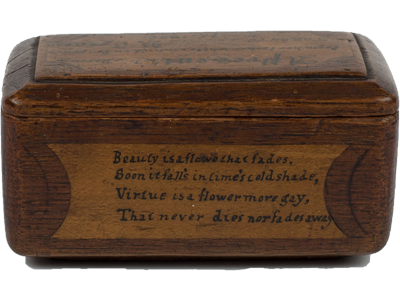The Rebellion of 1837-1838
During the nineteenth-century, non-elective councils made up of powerful families, trade companies, and church officials governed the colonies of Upper and Lower Canada. Reformers in both provinces wanted to replace the current system with a “responsible government” of elected representatives.
A journalist, William Lyon Mackenzie, led the rebellion in Upper Canada. Colonial militia defeated Mackenzie's rebels at the Battle of Montgomery's Tavern in 1837, forcing them to flee to the United States. Louis-Joseph Papineau organized the nationalists in Lower Canada. His rebels won a series of victories before British regular forces defeated them at the Battles of Saint-Charles and Saint-Eustache.
Both events inspired the Durham Report, which suggested the merging of Upper and Lower Canada into “the Province of Canada,” the creation of a responsible government, and the cultural assimilation of French-Canadians to an English way of life. The 1840 Act of Union adopted these suggestions.
Artifacts
After the Rebellion of 1837-38, over 1,000 men were jailed as traitors. Many prisoners carved delicate trinket boxes as gifts to loved ones, inscribed with verses expressing love for family and friends and celebrating freedom and liberty.
The box in our collection was made by Captain George Barclay. He was convicted of high treason and sentenced to several years in prison followed by banishment. After a few years in prison, he was pardoned. Barclay completed this box on June 25, 1838. It was a gift for his daughter, with two separate inscriptions:
Beauty is a flowe[r] that fades,
Soon it falls in time's cold shade,
Virtue is a flower more gay,
That never dies nor fades away
Tho' I be doom'd in Tyrants chains,
To loiter to the tomb
My mind will still while life remains
Be plac'd on you and home.
Stories
Andrew Harrower of Brooke-Alvinston Township
Andrew Harrower was born in Scotland. He came to Canada with his family. He eventually moved west and settled on a farm in Warwick Township. He was married twice and had eleven children. In politics he was a staunch Reformer and never missed recording his vote.
When the call to arms, with an order to “turn out”, went through the township of Warwick, Mr. Harrower, though a young man in the prime of life found himself bordering on a state of helplessness from a severe attack of rheumatism in one of his legs. To attend the muster at Warwick Village, the place of rendezvous for the township, was impossible as he was unable to walk across the floor. As the penalty for disobeying orders was the forfeiture of the owner’s land—which at first was held only by location ticket, and could be cancelled by the Government, he had no choice but to attempt to attend.
Harrower had no horse of his own at the time, but a neighbor kindly offered him the use of his, telling him if he could only put in an appearance and answer to the call, nothing further would be asked of him. With great difficulty he climbed on the horse and rode it to the muster ground, and along the trail his bad leg was banged against a number of trees. Arriving at the muster ground he answered the call and sat down on a log, while the others were being put through a rude sort of drill.
Col. Freer, the commanding officer, caught sight of Mr. Harrower, sitting apart.
Going up to him, he asked in a gruff voice why he was not “falling in” with the others. Mr. Harrower pointed to his leg, which he was unable to bend and told the Col. that he was unable to walk from rheumatism. Col. Freer told him to sit there till drill was over and he would give him a cure for the rheumatism.
After the military duties of the day were over, the Col. went into a shed of his own nearby where he hunted up a bottle and from a jar of turpentine poured about a pint into the bottle, putting in a piece of camphor about the size of a goose egg. Giving the bottle to Mr. Harrower he told him to make his way home as quickly as possible, by which time the camphor would be thoroughly dissolved, then to give the whole leg a thorough rubbing with the contents of the bottle, two or three times, which Mr. Harrower did with the happy result of a complete cure being effective.
~ Story told by Ruby McPhedran, Sarnia, Andrew Harrower was her great, great grandfather.




 Subscribe to this page
Subscribe to this page